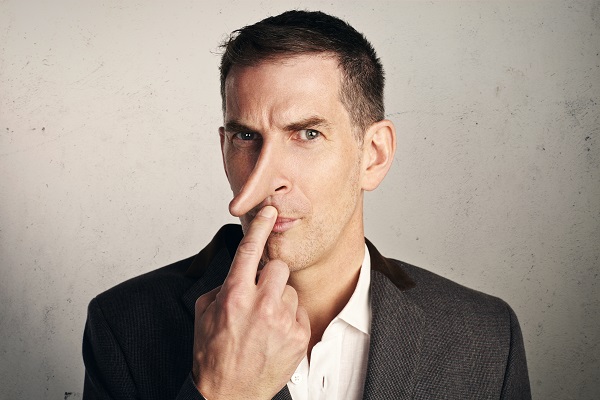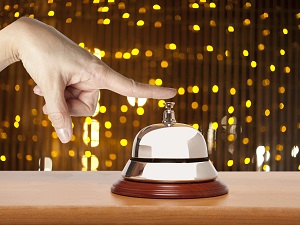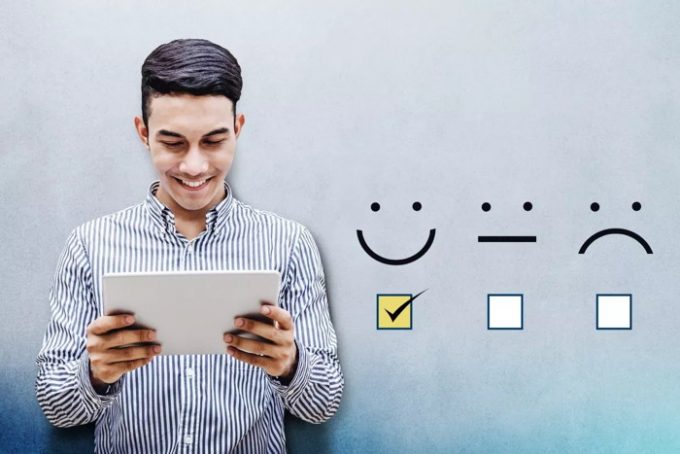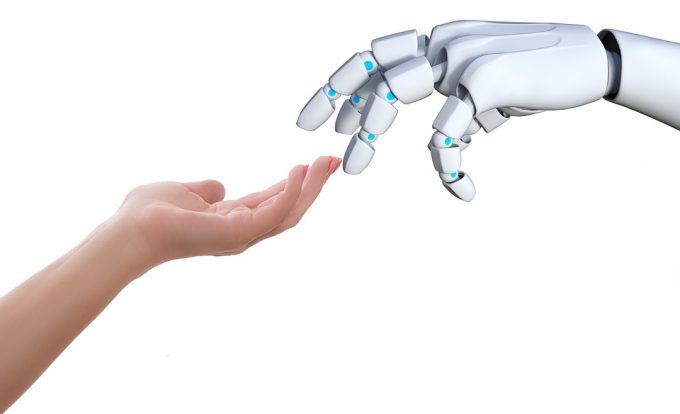
The painful truth about hotel loyalty programs
For years, marketing gurus and experts have taught hoteliers to focus on driving bookings from their loyal customers.
These are the guests who book a few times during the year.
Admittedly, this seems like one of the smartest and most sound hotel marketing strategies around to boost direct bookings – market to the people who already know and love you. The plethora of guest data you now have at your fingertips makes marketing to this current base of customers even easier and seemingly foolproof.
However, new research may prove otherwise….
In his book, How Brands Grow, Professor Byron Sharp of The University of South Australia, applied statistical analysis to sales data to find what truly drives a company’s success. His conclusion sent shockwaves through the marketing world:
“Your customers are customers of other brands who occasionally buy you.”
Companies can’t grow sales numbers significantly by focusing on loyal customers, but instead they must focus on “light buyers” who buy products (i.e. book a room at your property) relatively infrequently.
In other words, loyal guests are not your ideal target audience. Single booking guests are.
To move the needle on your hotel’s growth, you must attract NEW guests, instead of relying on loyal customers to keep coming back.
Single bookings spur hotel growth
Sharp cites Coca-Cola as an example of a successful global company that grew, not from Coca-Cola lovers who purchased and consumed the soda everyday, but from the millions of people who only drank it just a couple times a year.
Several other brands have come to rely on steady and strong sales from the masses that only purchase their products occasionally, with long breaks in between where these same customers purchase from competitors.
And let’s face it, OTAs, the culture of flash sales and last minute deals has made the travel industry one of the least loyal markets. In fact, 50 percent of American Airlines’ 2015 revenue came from 87 percent of its customers who flew on American Airlines just once that year.
Overall, data from Phocuswright suggests that – other than elite members – most travellers do not prefer to book direct through hotel websites. Many travellers do not seem to care about the hotel’s brand, as long as they get the perception of a good value by booking through OTAs.
However, most hotels today focus on past customer data and ways to reach and re-sell to their existing customers. After all, selling to your own guests appears low-risk, dependable and the quickest way to boost revenue.
Wrong, says Sharp.
He contends that the expense and effort that brands employ to market to their own customers is largely ineffective.
“Loyalty programs do practically nothing to drive growth,” Sharp said.
The painful truth: guests shop around
Companies largely over estimate just how loyal their customers really are.
The McKinsey Global Institute has been studying consumer decision journeys (the often erratic path people take as they move along from brand awareness to purchase), since 2009. Their studies show that the key to top-line growth is understanding the behaviour of modern consumers.
Their research uncovered that even your most loyal hotel guests, including members of your loyalty program, consider booking at other hotels more often than you know.
Over the years, McKinsey found that the bond customers have with their favourite brands has been slipping. Active engagement in loyalty programs slipped by 2 percent. Plus, 58 percent of loyalty members don’t even use the program or take advantage of its benefits after signing up.
Why aren’t travellers as loyal as they once were?
More choices and new technologies.
With all the channels and travel sites at a guest’s fingertips, it’s easier than ever before to research and book travel reservations. Hundreds of mobile apps open up a world of hotel options where guests can view and compare prices and amenities, read guest reviews and size up hotels side-by-side.
Also, people are more clued in to what their family and friends are buying, loving, referring (and disliking) via social media. All of these distractions and online triggers can cause even your best hotel guests to shop around.
And, suffice to say that in today’s digital world, people can’t help but consider more options.
Social media engagement: not as vital as you thought?
Modern customer decision journeys are also challenging the notion of engaging your “loyal” hotel social media followers.
According to Forrester Research, people who join and ‘like’ Facebook brand pages hardly ever interact or click on them thereafter. Their research shows the engagement rate of a Facebook brand page is generally 7 out of 10,000 users and for Twitter the rate is 3 out of 10,000. This lack of engagement is even worse for hotels who fail to produce compelling, fresh, authentic social content every week – 24/7/365.
McKinsey noted that most customers aren’t aware of, and simply not interested in, the differences between your brand or your competitor next door. And, those guests who do have a brand preference may decide to book with another hotel brand if it happens to be cheaper that day.
This fickleness shows that single-bookers (again, the ones who are really driving your success) don’t think of your property as remarkable, or even unique. They’re also not likely fans of your brand, on social media or anywhere else. It’s no surprise then that these buyers aren’t interacting with your brand on social media channels. Engaging and enticing “loyal buyers” to re-engage with you is necessary, but hardly a silver bullet.
In addition to trying to push your existing audience to engage with your hotel on social channels, focus on boosting the broad awareness of your hotel experience instead.
Then, get creative about translating the broad awareness to actual hotel consideration by creating interactive content on your hotel website, including destination guides, Chat-with–the-Concierge tools and powerful galleries of user-generated photos.
Other industry leaders have perfected this concept. For example, L’Oreal offers make-up tutorials instead of simply touting their products, while Charles Schwab offers basic financial planning lessons and investment calculators, in addition to showcasing their products.
Hotel marketing’s critical new battleground
The shiftiness of guest loyalty suggests that hotel marketers need to focus more on the moments when guests are INITIALLY considering which hotel to book (known as the initial consideration set).
According to McKinsey, the players in the initial consideration set are twice as likely to book versus the ones that pop up later in the guest’s decision-making process.
This confirms the need for hotel marketers to win travelers’ attention at the very beginning of the booking journey. And, drastically changes the dynamic of marketing mainly to guests who have previously stayed at your property, a tactic that hotel marketers have counted on for years.
When marketing to loyal hotel guests, normally you focus on a narrow collection of high-value customers, then use your marketing budget to retain them. In contrast, when marketing to grow your hotel’s exposure in the initial consideration set, you need to cast out a wider net to reach people who have little or no knowledge of your property.
Boosting exposure is vital to boosting growth
So, if marketing to and engaging with your current customers doesn’t drive growth at your property, what will?
What will reach people who don’t need you and don’t know you, so that when they are ready to book, your hotel comes to mind?
Advertising, answers Sharp.
“Advertising works best when it doesn’t try and persuade, but merely makes us remember a brand at the moment of purchase,” he said.
Advertising opens people’s eyes to your hotel. For instance, by keeping their beverage brand in people’s minds, Coca-Cola ads increase the probability of people buying their product by such a small margin that consumers hardly notice it. For this reason, most consumers claim they are not swayed by advertising.
When crafting advertising experiences, think of your two audiences:
1st Audience:
Guests who enjoyed a stay at your hotel in the past, but who have not booked since then. According to McKinsey, these lapsed guests hold high potential since they have some knowledge of the brand, even if their experience was several years ago. You just need to find out why they never returned or if their habits or lifestyle have changed.
2nd Audience:
These are the travellers who have no experience with your hotel. They may not understand what you offer, have never considered staying with you before, or perhaps have pre-conceived notions about your guest experience.
For both audiences, the solution is to create a unique story and innovative new services, products and news to stay at the top of their minds. Continue building new packages, guest experiences and amenities to drum up excitement.
Conclusion
While the significance of boosting exposure to new audiences is hardly a cutting-edge concept, research confirms that it now requires a new focus.
Both Sharp and MGI don’t suggest ignoring your most loyal guests to make room for new customers. Rewarding and retaining these repeat guests is still important. In fact, 42 percent of purchases are from customers who had purchased from that brand before.
However, focusing your hotel marketing budget on mainly retaining guest loyalty is a risky move since today’s shop-around mentality means you’ll lose more guests than add new ones.
Instead, boost your hotel’s growth by focusing more on creative products and services for the 87 percent of consumers who are likely to leave your compset in favour of trying out others.
Tambourine is a US-based marketing, booking and distribution service that helps hotel and travel marketers sort it all out. It delivers a 360º program that reduces stress and increases revenue.







